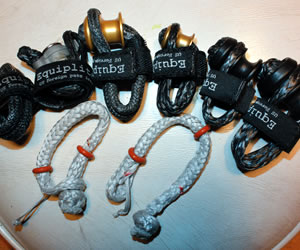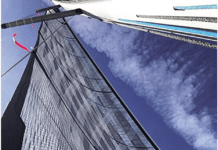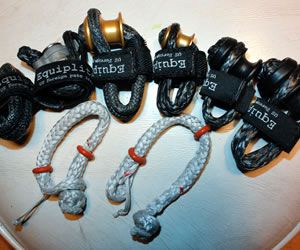Photos by David Liscio and Ralph Naranjo

In your recent review of shackles (PS, September 2014), you tossed in a statement about recoating the soft shackles bimonthly with a UV protectant. Why? And what part of the shackle needs treatment? If Dyneema loses its UV resistance that readily, its news to me. Do my Dyneema lifelines need similar treatment?
Cliff Smith
Carola
Richmond, Calif. / Sea of Cortez, Mexico
According to Equiplite, a manufacturer of some of the soft shackles we tested, it is best practice to re-coat the shackles Dyneema loops regularly; Equiplite suggests every two months. While the Dyneema is pre-coated, refreshing the UV protection periodically will go a long way toward preventing UV degradation of the soft fibers and maximizing the life of the shackles. Equiplite also recommends rinsing the shackles thoroughly with fresh water after sailing in salt water.
Re-coating Dyneema lifelines with a protectant couldnt hurt, but we have not determined that it is necessary because they are much thicker than the soft-shackle loops, and so are less vulnerable to failure from UV damage alone. With lifelines, you also have to watch for chemical exposure and chafe.
According to multihull designer and fiber-rigging advocate John Marples, the braided Dyneema ropes are so thick, they can tolerate some abrasion or sun damage to the outer fibers as this outer layer is somewhat sacrificial and is meant to protect the inner fibers. Dyneema lifeline maker Colligo recommends using the largest-diameter line possible to account for dealing with chafe and UV damage, so you can maximize the time between lifeline replacements.
In our opinion, uncoated wire lifelines are still the better option for cruising sailors, who usually prize wires proven durability and easy inspection over the weight savings of Dyneema lifelines. Wire lifelines can last up to 20 years, and most failures are at the terminal not with the wire. Field data for Dyneema lifelines is thin, but there are reports of rigging lasting eight years or more.
Check out our Dyneema lifeline test in the September 2012 issue online, and stay tuned for the update.
Non-marine Diesel OK?
I met a long-haul truck driver who said that car/truck diesel is OK for marine diesels. I have a Yanmar diesel and have always purchased diesel fuel at a marina. Is there a difference in marine and car/truck diesel?
Glenn Dickson
Essence, Hunter 28
St. Johns River, Fla.
Some marine-diesel dealers will pre-blend specific additives, such as Biobor JF (biocide) or Valvtect (biocide plus multi-function additive), with the fuel. If this is the case, the pre-blended additives-which are no different from the additives you can buy at a local chandlery-are always advertised. If the marine fuel is not pre-blended with additive(s), then its formula is no different than diesel sold for trucks. The only difference in buying truck diesel vs. non-blended marine diesel is the taxes you might have to pay; marine fuel does not carry road tax but might carry local taxes.





































